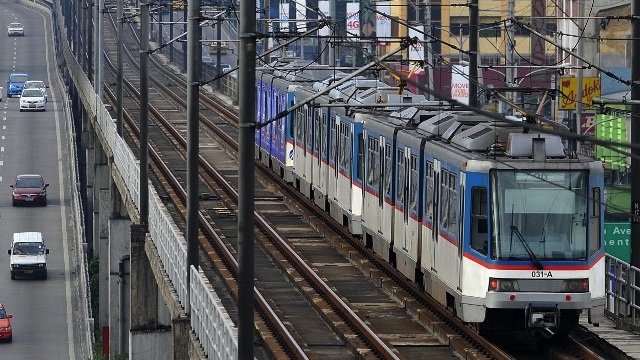SUMMARY
This is AI generated summarization, which may have errors. For context, always refer to the full article.

MANILA, Philippines – The 10 infrastructure projects initially listed under the Public-Private Partnership (PPP) program were not bid out as targeted in 2010 as they were “designed to fail,” a consultant of government said.
Speaking at the Economic Journalists Association of the Philippines Forum 2012 on Thursday, November 22, Rene Santiago, a transportation consultant who has worked closely with the government in railway projects, explained why the 10 PPP projects were not rolled out when they were announced two years ago.
“I had that suspicion when I was looking at the 10. Remember a new government was coming in and many of the proposals were carried over from the previous government,” he said.
“There were enemies of PPP who didn’t want it to succeed. These included government bureaucrats and private interest. Another reason is many in the government are very unfamiliar with PPP. The new administration was very careful and timid with pushing it and they didn’t like listening to people like me that they were heading in the wrong direction. But I think now they’re learning the ropes.”
He cited, for example, the Bohol Airport Development project. “They were still acquiring land when they put out the bid, but land acquisition can take two to 3 years.”
Also, Santiago said it was a bad idea to put mostly airport projects in what was a newly launched program back then.
“I don’t see the reason why the private sector would be so excited about O&M (operation and management) of an airport. It has no large potential other than if you’re operating an international gateway,” he said.
Out of the 10 PPPs announced for bidding in 2010, 4 were airport projects. The PPPs included:
- the Cavite-Laguna Expressway project,
- NAIA Expressway II,
- LRT 2 East Extension project’
- Privatization of LRT-1 O&M,
- Privatization of MRT-3 O&M,
- LRT 1 Cavite Extension project,
- Bohol Airport,
- Puerto Princesa Airport,
- New Legaspi (Daraga) airport, and
- Privatization of O&M of Laguindingan airport.
Officials earlier said some of these projects were shelved because the government wanted to be prudent about the structure and rules under which these would be bid out to private investors. Feasibility studies also took a lot of time.
Ferdinand Tolentino, deputy executive director of the PPP Center, defended the PPP program, saying it “has taken off” and “we’ve seen positive results.”
Since 2010, the government has successfully awarded only two PPP projects: the Daang Hari-SLEx connector road and a school project of the Department of Education — both of which were announced after the initial 10 PPP projects.
This year, the PPP Center announced a target to bid out 8 PPP projects. Tolentino said 4 of these have been rolled out for bidding. These include the LRT-1 Cavite extension, NAIA Expressway Phase II, and modernization of the PH Orthopedic Center. The government expects the LRT-1 extension to be awarded by April 2013.
“The NEDA-ICC is meeting on that list. We’re making sure that these projects are well structured… viable.”
“The 8 projects we have lined up at the start of the year remain feasible for rollout if requisite conditions are present,” said Tolentino.
Fast-tracking PPPs
For his part, Transportation Secretary Joseph Emilio Abaya said they are keen on fast-tracking the PPPs.
“Fast-track means faster than previous. I could hound undersecretaries not to waste time to inch these projects forward. My predecessor was into details, I’m pretty confident he has set up a good assembly line,” he said, referring to now Interior Secretary Manuel Roxas.
Abaya said the definition of hybrid PPPs was what caused “some delay.”
He explained that hybrid PPPs are funded through Official Development Assitance (ODA) and private funding. This means that if a project costs P60 billion, half will be funded through an ODA loan by the government, and half will be funded by the private sector, which will bid for the project.
Abaya said that while these ODA loans are tied, these are concessional loans. When the government takes out tied ODA loans, projects that will be financed by these loans will involve only contractors from the funding donor.
Opportunity losses
Santiago said that opportunity losses due to delays in the PPPs are mounting.
For the LRT-1 Cavite extension alone, he estimated the loss at P80 billion in the last 10 years.
Santiago also estimated the losses for 2011 to 2013 to total P25 billion in economic costs.
The value of the economic benefit loss of the LRT-2 east extension, which would not be completed until 2016, according to Santiago, is already P5.4 billion, more than half the cost of the project itself, which is P9 billion.
According to Santiago, Manila was first among ASEAN countries to set up an urban railway — the LRT-1 built in the 1980s. “Many of ASEAN countries have now overtaken Manila,” he said, however.
“From now until 2020, expect the Philippines to lag behind other countries in terms of railway projects,” he said. – Rappler.com
Add a comment
How does this make you feel?
There are no comments yet. Add your comment to start the conversation.